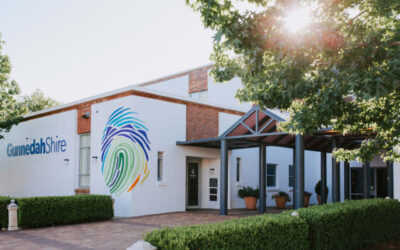Retired Sergeant Ken Jones of the 12/16th Hunter River Lancers attended the 75th anniversary of the formation of the regiment in Armidale at the weekend, with the Freedom of Entry to the City parade held on Saturday.
A former reservist who combined farming at Kelvin with army life, Ken was accompanied by his wife Olwyn and others who had served at the same time.
The program began with the regimental open day in Curtis Park on Thursday and Friday mornings and the regimental church service in the afternoon.
Saturday’s big event was the Freedom of Entry Parade, where the regiment marched along Faulkner Street led by Commanding Officer Lieutenant Colonel I. McNab, and was challenged by the Police District Commander, Superintendent Steve Laska, at the Beardy Street Mall intersection. After the traditional ceremony, the regiment was granted the Right of Freedom of Entry to the City and marched on to Armidale Regional Council, where Mayor Sam Coupland inspected the troops and addressed the regiment.
The host officer was Major General Roger Noble (retd) AO DSC CSC, with Major General David Thomae AM the special guest.
The 12/16th Hunter River Lancers Beersheba Dinner was held that evening at the Armidale Ex-Services Memorial Club – 106 years after the legendary Battle Of Beersheba, on October 31, 1917, when the Anzac Mounted Division (Desert Mounted Corps) launched a series of attacks against the strong defences which dominated the eastern side of Beersheba, resulting in capture during the late afternoon.
Shortly afterwards, the Australian Mounted Division’s 4th and 12th Light Horse Regiments (4th Light Horse Brigade) conducted a mounted infantry charge with bayonets in their hands, their only weapon for mounted attack, as their rifles were slung across their backs. Part of the two regiments dismounted to attack entrenchments on Tel es Saba defending Beersheba while the remainder of the Light Horsemen continued their charge into the town, capturing the place and part of the garrison as it was withdrawing.

12/16th Hunter River Lancers Commanding Officer Lieutenant Colonel I. McNab leading the parade.
The 12th Light Horse Regiment was commanded by Lieutenant Colonel Donald Cameron, a Boer War veteran and grazier from Scone, while major Eric Hyman, a Tamworth grazier, led A Squadron and B Squadron in the second wave was led by Major Cuthbert Fetherstonhaugh, a Boer War veteran and grazier from Coonamble.
The story of the Light Horse and the Battle of Beersheba is told in many publications and dramatised in the 1987 epic film The Lighthorsemen. After the capture of Beersheba and its precious water wells, a captured German staff officer commented: “We did not believe that the charge would be pushed home, that seemed an impossible intention, I have heard a great deal about the fighting quality of the Australian soldiers – they are not soldiers at all; they are mad men.”
Guest speaker at the dinner was Major General Roger Noble AO DSC CSC (Retd), honorary colonel of the 12th/16th Hunter River Lancers.
The origins of the Hunter River Lancers can be traced back to 1885 when cavalry enthusiasts in Sydney first obtained permission to form a cavalry troop. Interest soon stirred and shortly thereafter troops were formed in many country areas, one of which was in the Hunter River area. In June 1897, a volunteer cavalry regiment of bushmen was raised and designated the ‘Australian Horse’.
Some of the sub-units from this regiment were the forerunners of the New England Light Horse (NELH). In 1900, E Squadron was raised from Gunnedah, Boggabri, Tamworth and Armidale and rapidly mobilised a detachment to serve in the South African War.
The regiment was retitled 12th/16th Hunter River Lancers on July 31, 1949, forming part of the 1st Armoured Brigade. In the following years Regimental HQ was moved to Tamworth and the regiment operated in a reconnaissance role.
The motto of the 12/16th Hunter River Lancers is Virtutis Fortina Comes which translates to Fortune is the Companion of Valour.
To order photos from this page click here



